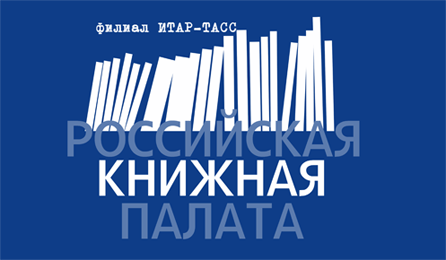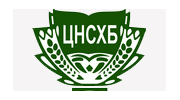Labor behavior of collective farmers in Siberia under the state agrarian policy in 1953–1964
Oct 25 2024Andreenkov S. N. Labor behavior of collective farmers in Siberia under the state agrarian policy in 1953–1964 // The Russian Peasant Studies. 2024. V.9. №3. P. 185-203.
DOI: 10.22394/2500-1809-2024-9-3-185-203
Annotation
The article considers the labor behavior of collective farmers in Siberia under the agrarian measures of the supreme power during Khrushchev’s thaw. The author identifies factors that influenced the labor behavior of collective farmers, its forms and role in the state agrarian policy, emphasizing contradictory tendencies in the functioning of collective farms. Thus, financial incentives were used more widely, but the state did not abandon mobilization methods for solving economic problems. Therefore, the production and technological discipline in collective farms remained at a low level; many villagers avoided working in the public economy. Personal subsidiary farms had a significant impact on the labor behavior of collective farmers, since the public economy provided main resources for their personal subsidiary plots. Increased wages at the collective farm allowed peasants to strengthen the feed base for their livestock. Collective farmers acquired means for personal subsidiary farming through petty thefts at the collective farm. The peasantry retained many of its past features manifested primarily in the labor behavior of women, who tended to pay more attention to their household than to the collective farm. To reduce the villagers’ labor costs in the private sector of the agrarian economy, the state periodically conducted campaigns to limit the size of personal subsidiary plots.
Keywords
Labor behavior, collective farms, collective farmers, machine-tractor stations, machine operators, personal subsidiary farms, state agrarian policy, agriculture.
About the author
Andreenkov Sergey N., PhD (History), Senior Researcher, Sector of Agrarian and Demographic History, Institute of History, Siberian Branch of the Russian Academy of Sciences. Akademika Nikolaeva St., 8, Novosibirsk, 630090.
E-mail: This email address is being protected from spambots. You need JavaScript enabled to view it.
Sharapov S.V. Regional authorities and collective-farm peasantry during the Great Patriotic War: Mobilization, care, corruption (based on the data from the Novosibirsk Region) // The Russian Peasant Studies. 2023. V.8. №1. P. 67-84.
DOI: 10.22394/2500-1809-2023-8-1-67-84
Annotation
On the example of the Novosibirsk Region, the author considers the features of the interaction of local authorities and collective farms during the war. The contradiction, which regional and district authorities faced, was that the total mobilization of resources by the central authorities threatened the local social-economic situation. Therefore, the decisions and actions of the local authorities became contradictory as they had to compensate for the damage caused by their efforts to seize agricultural products from collective farms. Moreover, there were corrupt motives as very common for the relations between the authorities and collective farms. In most cases, collective-farm peasants responded to the obviously excessive state demands by inaction, which forced the local authorities to show additional efforts in order to make agricultural producers fulfill the state requirements. The complexity of the agrarian agenda diverted the attention of the party and governing bodies. However, the state activities were still insufficient to keep the collective farm production under constant control.
Keywords
Agrarian policy of the Soviet state, Great Patriotic War, collective farms, mobilization, trusteeship, corruption.
About the author
Sharapov Sergey V., PhD (History), Researcher, Institute of History, Siberian Branch of the Russian Academy of Sciences, Nikolaeva St., 8, Novosibirsk, 630090.
E-mail: This email address is being protected from spambots. You need JavaScript enabled to view it.
Il`inykh V.A. Siberian village during collectivization: Microhistory (Plotnikovo village in the Novosibirsk district of the Novosibirsk Region) // The Russian Peasant Studies. 2021. V.6. №1. P. 71-90.
DOI: 10.22394/2500-1809-2021-6-1-71-90
Annotation
The author reconstructs the history of the Plotnikovo village in the Novosibirsk district of the Novosibirsk Region in the late 1920s – 1930s. The research was conducted in the microhistoric format, which allows to consider the agrarian history of Russia in the everyday perspective of its direct actors – peasants united in their primary communities. The article aims at presenting the course of collectivization and its price for a certain rural settlement. In the Plotnikovo village, collectivization began at the end of 1929 with the creation of a giant commune which collapsed after the publication of Stalin’s article “Dizzy with Success”. The small collective farm “Zavety Ilyicha” was established on the basis of this commune. Collectivization resumed in 1931 and ended in the late 1930s. The author also considers anti-peasant repressions, de-kulakization, local famine in 1934-1935, state regulations of the size of the collective farmers’ smallholdings, behavioral strategies of peasants and rural officials. The author concludes that in the early 1940s the Plotnikovo village was at the same or even lower level of development than in the early 1920s. Thus, in general collectivization had a negative impact on the development of agricultural productive forces in the village under study, and the difficulties the villagers survived in the 1930s cannot be counted – only named by V.P. Danilov’s term ‘tragedy of the Soviet village’.
Keywords
Peasantry, village, agrarian policy of the Soviet state, collectivization, collective farms, smallholdings, microhistory, Siberia, Т. Shanin, V.P. Danilov.
About the author
Il’inykh Vladimir A., DSc (History), Head of the Agrarian and Demographic History Sector, Institute of History, Siberian Branch of the Russian Academy of Sciences. 630090, Novosibirsk, Ac. Nikolaev St., 8.
E-mail: This email address is being protected from spambots. You need JavaScript enabled to view it.
Obozny K.P. Orthodox Church in the USSR on the eve of collectivization // The Russian Peasant Studies. 2020. V.5. №3. P. 97-108.
DOI: 10.22394/2500-1809-2020-5-3-97-108
Annotation
The article describes the position of the Orthodox Church in Soviet Russia on the eve of the mass collectivization and dekulakization in 1930. Based on the church documents and decrees of the Soviet government, the author identifies serious changes in the church life of different dioceses of the Moscow Patriarchate. Church schisms, mass repressions, quantitative and qualitative changes in the composition of the clergy —all these factors in some ways prepared Soviet citizens, primarily the peasantry, for serious changes in the agrarian policy of the Bolsheviks. Despite the tough internal policy of the Communist Party, which aimed at eliminating all opposition (political, economic and religious), including among the rural population, the resistance to the collective-farm system was primarily spiritual. Thus, the weakening church and its destruction in the late 1920s—early 1930s became a part of the Soviet government plan that aimed at suppressing and enslaving the peasantry.
Keywords
Russian Orthodox Church, Sergianism, collectivization, repressions, collective farms, spiritual opposition
About the author
Obozny Konstantin P., PhD (History), Associate Professor, St. Philaret’s Christian Orthodox Institute. Pokrovka St., 29, Moscow, 105062, Russia.
E-mail: This email address is being protected from spambots. You need JavaScript enabled to view it.
“Look out or you’ll be harmed!”: On the social-political reasons for Stalin’s collectivization
Oct 17 2020Aleksandrov K.M. “Look out or you’ll be harmed!”. On the social-political reasons for Stalin’s collectivization // The Russian Peasant Studies. 2020. V.5. №3. P. 70-96.
DOI: 10.22394/2500-1809-2020-5-3-70-96
Annotation
The article presents the results of the comprehensive analysis of the negative consequences of socialist transformations in the Soviet village for both society and national economy. The article is based on a wide range of sources and works on the reasons for collectivization in the USSR. The historiographic findings provide grounds for broad discussions that take into account different aspects, approaches and concepts—depending on the assessments of the priorities of I.V. Stalin and other leaders of the CPSU (b) at the turn of the 1920s—1930s: from the necessary and forced development of the industry at the expense of the rural population exploitation to the establishment of the personal dictatorship of the General Secretary of the Central Committee of the CPSU (b) and eradication of the peasant economic independence. The author suggests to search for an answer to the conceptual question about the meaning and reasonability of collectivization not so much in the economic conditions as in the social realities of the late 1920s as related to the peculiarities of the one-party state and to the sharp deterioration in the political situation under the grain-procurement crises determined by the artificial restrictions on the private initiative in the previous period. The main beneficiaries of the collective-farm system, which was imposed on the village by the unprecedented violence, were thousands of appointees of the CPSU (b), who sought to preserve their power, privileges and state property in their possession by introducing the ‘second serfdom’ and the all-Union system of forced labor, which put an end to the Russian Revolution of 1917.
Keywords
collectivization, collective farms, peasant resistance, I.V. Stalin, V.M. Molotov, appointees, XVII Congress of the CPSU (b), grain procurement crises
About the author
Aleksandrov Kirill M., PhD (History), Associate Professor, St. Philaret’s Christian Orthodox Institute. Pokrovka St., 29, Moscow, 105062, Russia.
E-mail: This email address is being protected from spambots. You need JavaScript enabled to view it.
Andreenkov S.N. Reforms in the economies’ system and land use in the Novosibirsk Region in the 1990s // The Russian Peasant Studies. 2019. V.4. №4. P. 58-75.
DOI: 10.22394/2500-1809-2019-4-4-58-75
Annotation
The article considers the features of reorganization of agricultural enterprises and land use system in the Novosibirsk Region in the 1990s. This reform was the main direction of the agrarian transformations in the 1990s. The author identifies the logic and consequences of the collective and state farms transformation into various forms of commercial enterprises (joint-stock companies, cooperatives, peasant farms and their associations) and features of the land redistribution. At the first stage of the reform (1991), the collective and state farm system of the Novosibirsk Region did not change, new forms of farms and land use just started to develop, and the size of subsidiary plots significantly increased. At the second stage of the reform (1992–1993), the reorganization of collective and state farms accelerated, a network of large commercial enterprises developed, and the number of peasant farms increased. However, the new organizational-economic system met the market economy standards only formally. The new agricultural jointstock companies and cooperatives did not differ much from their predecessors—collective and state farms. Large farms remained the main supplier of agricultural products on the market although they worked in extremely unfavorable conditions. Nevertheless, the role of small economies represented by peasant farms also increased.
Keywords
land reform, collective farms, state farms, agriculture, land use, Novosibirsk Region
About the author
Andreenkov Sergey N., PhD (History), Senior Researcher, Sector of Agrarian History, Institute of History, Siberian Branch of the Russian Academy of Sciences. 630090, Novosibirsk, Akademika Nikolaeva St., 8.
E-mail: This email address is being protected from spambots. You need JavaScript enabled to view it.
Goncharova I.V., Chuvardin G.S. Communes of the Central Black Earth Region from “war communism” to collectivization: Design and implementation // The Russian Peasant Studies. 2018. V.3. №4. P. 105-122.
DOI: 10.22394/2500-1809-2018-3-4-105-122
Annotation
The article considers evolution of the Bolsheviks’ policy starting from the introduction of communes in the village as a socialist way of rural life in the post-revolutionary period. The archival materials of the Central Black Earth Region prove the idea of the authorities to create collective farms of commune type, which was determined by the revolutionary euphoria, and show the results of implementing this project in the agricultural center of the country during the NEP. The village communes (collective peasant associations) of the Orel Region depended on the state subsidies and state land fund. The social portrait of these communes’ members and their estimates of the communes prove that some former noblemen tried to adapt to the new Soviet reality under the Charter of the commune to preserve their ‘gentry nests’ from land redistribution. The most important factor determining the life of village communes in the 1920s — early 1930s was their changing role in the state ideology and policy. During this period, the position of the Bolsheviks changed according to the strategic aims of the state agricultural policy. Under the NEP, when market relations and private initiative were allowed, the communes were considered exemplary farms of the future showing peasants a new way of everyday life and joint farming. Their economic unprofitability was ignored due to the task of cultural education of local peasants, which became an additional incentive for peasant entrepreneurs to enter communes and to use state subsidies to improve their financial situation. Communards’ children had a good chance for education which was an important social lift of that time. The state collectivization policy radically changed the official attitude to village communes — they were thoroughly checked and strongly criticized. Thus, the multi-form agricultural sector was destroyed and the agricultural artel was declared the dominant form of collective farming. The primary task of new collective farms was to leave peasants without means of production and investments. Moreover, under the socialist experiment peasants simply disappeared as its observers and turned into collective farmers, i.e. participants of the experiment.
Keywords
Peasants, Central Black Earth Region, village communes, collective farms, authorities, Bolsheviks, collectivization.
About the authors
Goncharova Irina V., DSc (History), Professor, Department of Russian History, Orel State University named after I.S. Turgenev. 302026, Orel, Komsomolskaya St., 95.
E-mail: This email address is being protected from spambots. You need JavaScript enabled to view it.
Chuvardin German S., DSc (History), Professor, Department of Russian History, Orel State University named after I.S. Turgenev. 302026, Orel, Komsomolskaya St., 95.
E-mail: This email address is being protected from spambots. You need JavaScript enabled to view it.























